Lying two miles west of Ringwood is Avon Heath Country Park. Managed by Dorset County Council with some support from the RSPB, Avon Heath consists mostly of heathland apart from the occasional clump of birch and pine trees. I haven’t been there for some time so I decided to visit on Wednesday.
Within a few minutes I was lucky enough something of interest:
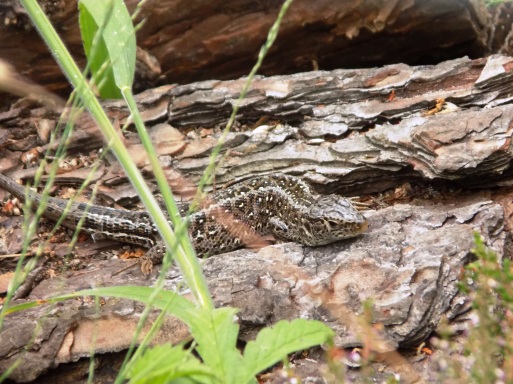
OK, I have a confession to make. Although I did see a wild sand lizard shortly after this is a captive one. Avon Heath runs a sand lizard breeding program to help out the protected species.
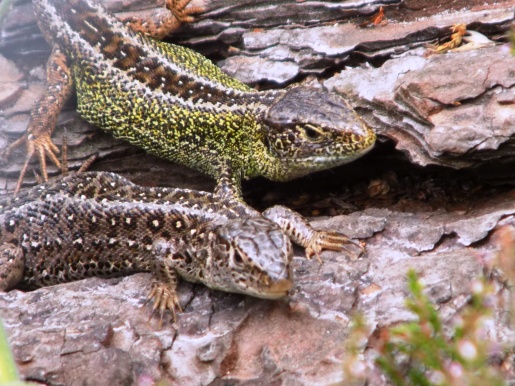
Assuming the website is correct there are currently 2 male and 4 female sand lizards. As you can see above the males are a little bigger and are mostly green whereas the females are completely brown. It was early afternoon on a warm but not hot day so these lizards were basking in the sun. Apparently they are fed crickets by the rangers when the insects are less active.
As I say though, only a few hundred metres from the vivarium I saw a female sand lizard sat on a log as if to prove they are genuinely a native species.
Just behind the vivarium is a great wildlife area. What I really like about the wildlife area at Avon Heath is how natural it feels. Whilst they are a few bird feeders the area has a pond and lots of wild planting so it doesn’t feel quite so staged as some hides do. As soon as I walked into the hide I could see loads of bird life, most bathing in the pond to keep cool like this goldfinch.
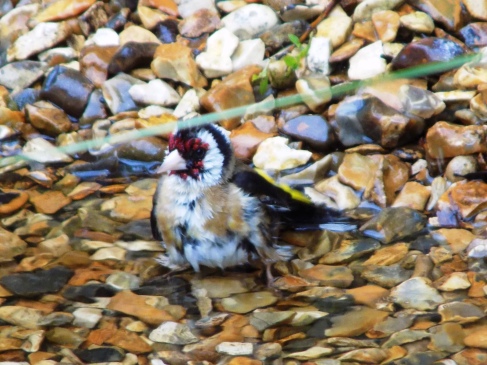
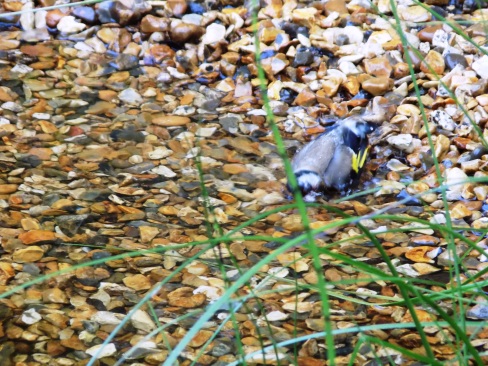
I also spotted a female Emperor Dragonfly flitting around the pond and it eventually landed on a reed and started to lay some eggs.
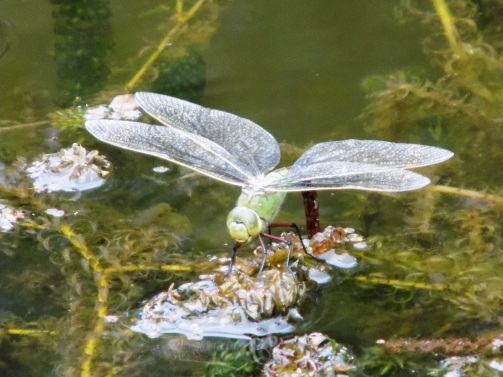

It was interesting to see how the dragonfly rotated in a circle as if doing an impression of a clock, presumably to spread out the eggs. Dragonfly nymphs are the most ferocious predators in a pond so the currents residents will have to be wary in the future.
Like many such places, the area around the play park and the cafe was busy but as soon as you head off on the footpaths it becomes much quieter. Due to the warmth I didn’t see much wildlife but the park is home to the dartford warblers, nightjars and woodlarks. There were even signs warning of a woodlark nesting not far away from the visitor centre.
One more common species that I did see though was wood ants. Wood ants are an important part of a woodland ecosystem as they disperse seeds, stimulate the roots and shoots of trees to distribute nutrients and are a useful food source.
I saw several trails of ants and often the ants were carrying huge bits of material relative to their size. Eventually I found a nest which is a feat of insect architecture.

Initially it just looks like a pile of pine needles but when you look closer you can see it is swarming with ants. I’m not sure why there was a Pringles can in it but the ants didn’t seem to mind.

Here you can see some of the many holes which are entrances to the nest.There is just so much going on that you could see and watch a wood ant for ages.
For more information about Avon Heath you can visit their website here.

No comments:
Post a Comment